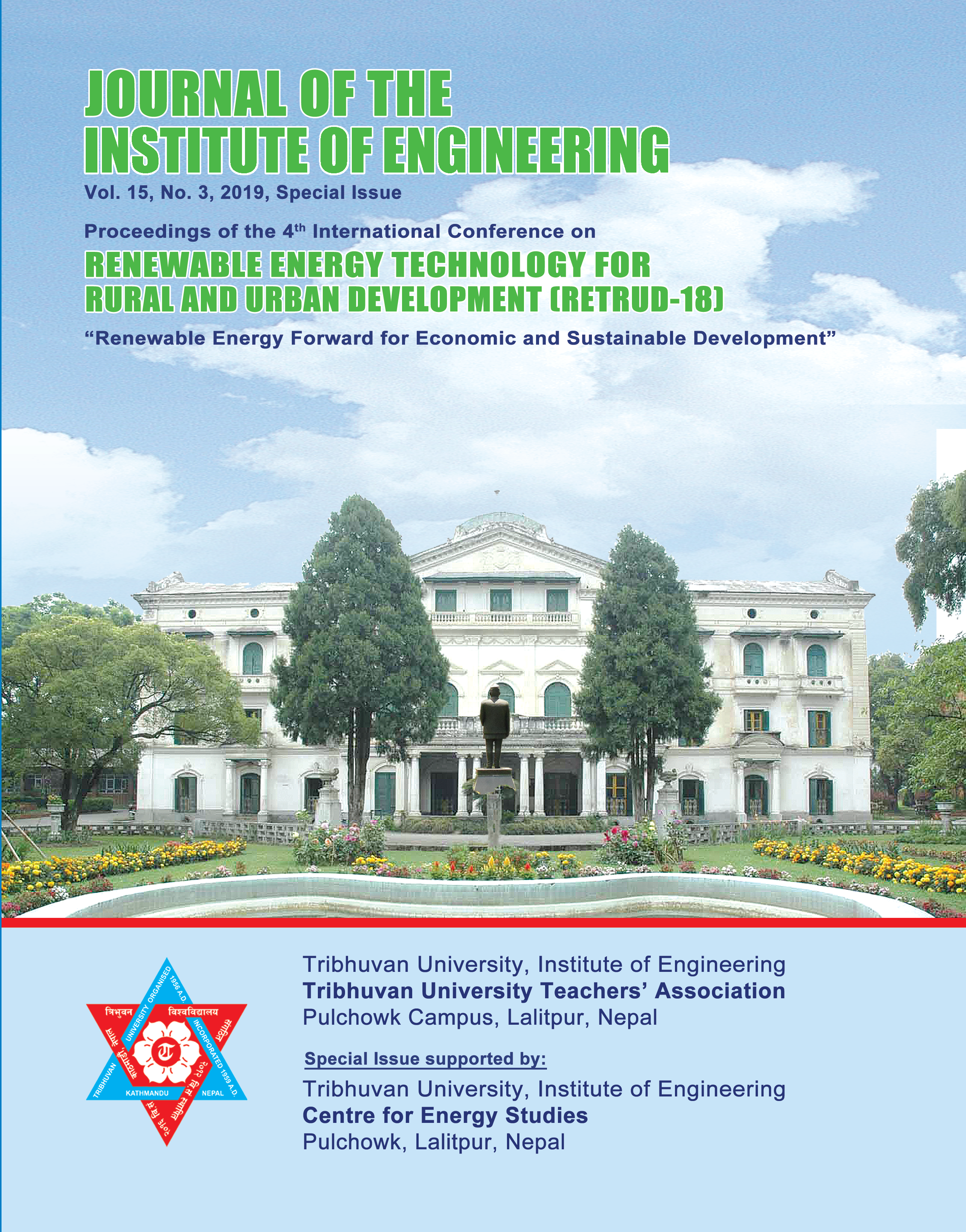Sub-national Energy Access Planning Model for Sustainable Development Goals: A Case Study of Barpak
DOI:
https://doi.org/10.3126/jie.v15i3.32179Keywords:
Energy Access, Multi-Tier Framework, Sustainable Development GoalsAbstract
As most nations have adopted the Sustainable Development agenda to achieve the 17 Sustainable Development Goals (SDGs) by 2030, it is vital that planning of energy systems at local, regional and national levels also align with the agenda in order to achieve the goals. This study explores the sustainability of primary energy resources of a rural community to meet growing demands of the community, in order to achieve SDGs for energy access Goal no. 7 (SDG7) at local level. Using a linear back-casting techno-economic energy access model that informs the expected change in energy demand in order to reach SDG7 targets, this study examined whether local energy resources would be enough to achieve the targets for Barpak VDC (named such at the time of data collection before Nepal’s administrative restructuring), and explored the possibility of importing electricity from national grid to attain SDG7 targets. By analyzing the outputs of the model for Barpak, we found that currently assessed local energy resources are insufficient to meet the energy access targets. Importing electricity from national grid, in addition to the mini-hydropower plant currently in operation at Barpak is needed to achieve the targets. Huge cost investment and timely expansion of transmission and distribution infrastructure is crucial. By 2030, total energy demand is expected to grow up to 50,000 Gigajoules per year. Electricity import from national grid grows steadily, reaching up to 45,000 Gigajoules in 2030. The social costs of energy will continue to be dominated by household sector till 2030, reaching up to 30 million Nepali Rupees per year in total. Use of wood as fuel, the only significant source of emission in the model is modeled to decrease linearly and stop by 2030, as required by SDGs. Emission of 17 Metric Tonnes of Carbon-dioxide and 4.5 million kg Methane equivalent is reduced to zero at 2030. This model serves as an innovative approach to integrate SDG targets to local and regional energy planning process, and can be adopted for energy systems and policy planning for various regions in Nepal.
Downloads
Downloads
Published
How to Cite
Issue
Section
License
The Copyright is held by Journal of the Institute of Engineering, IOE, TU




